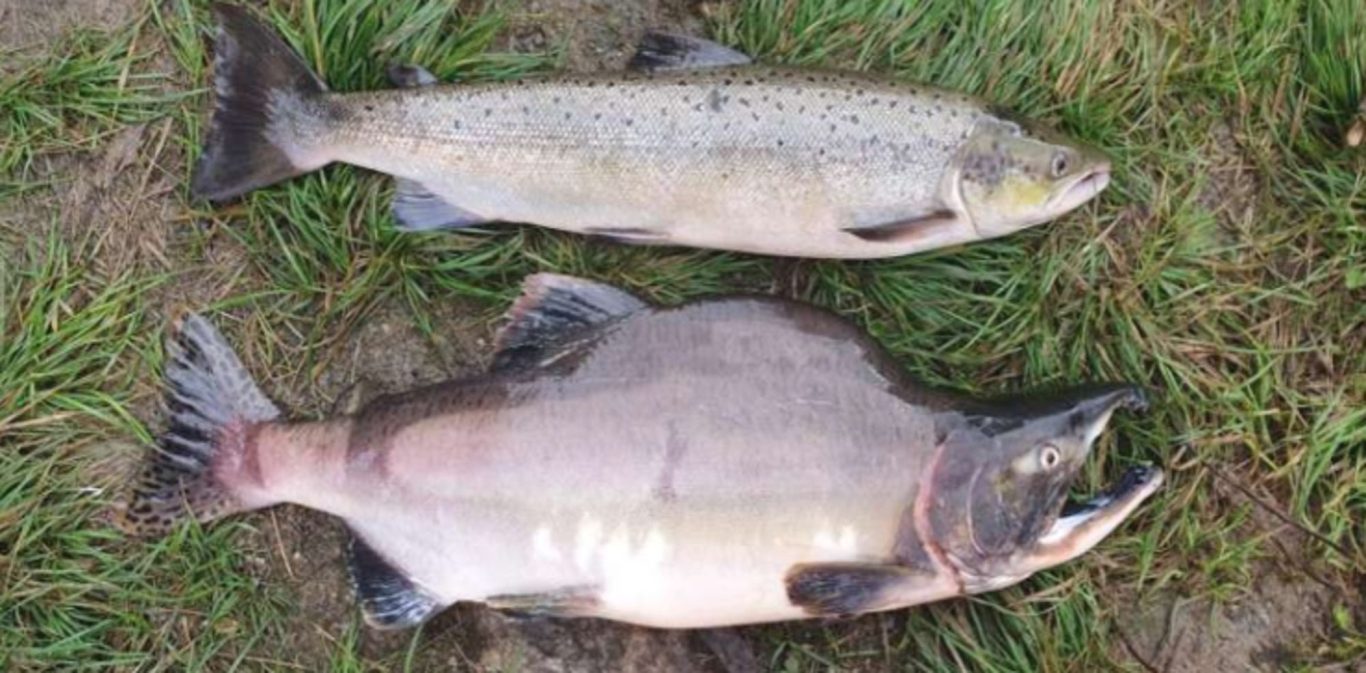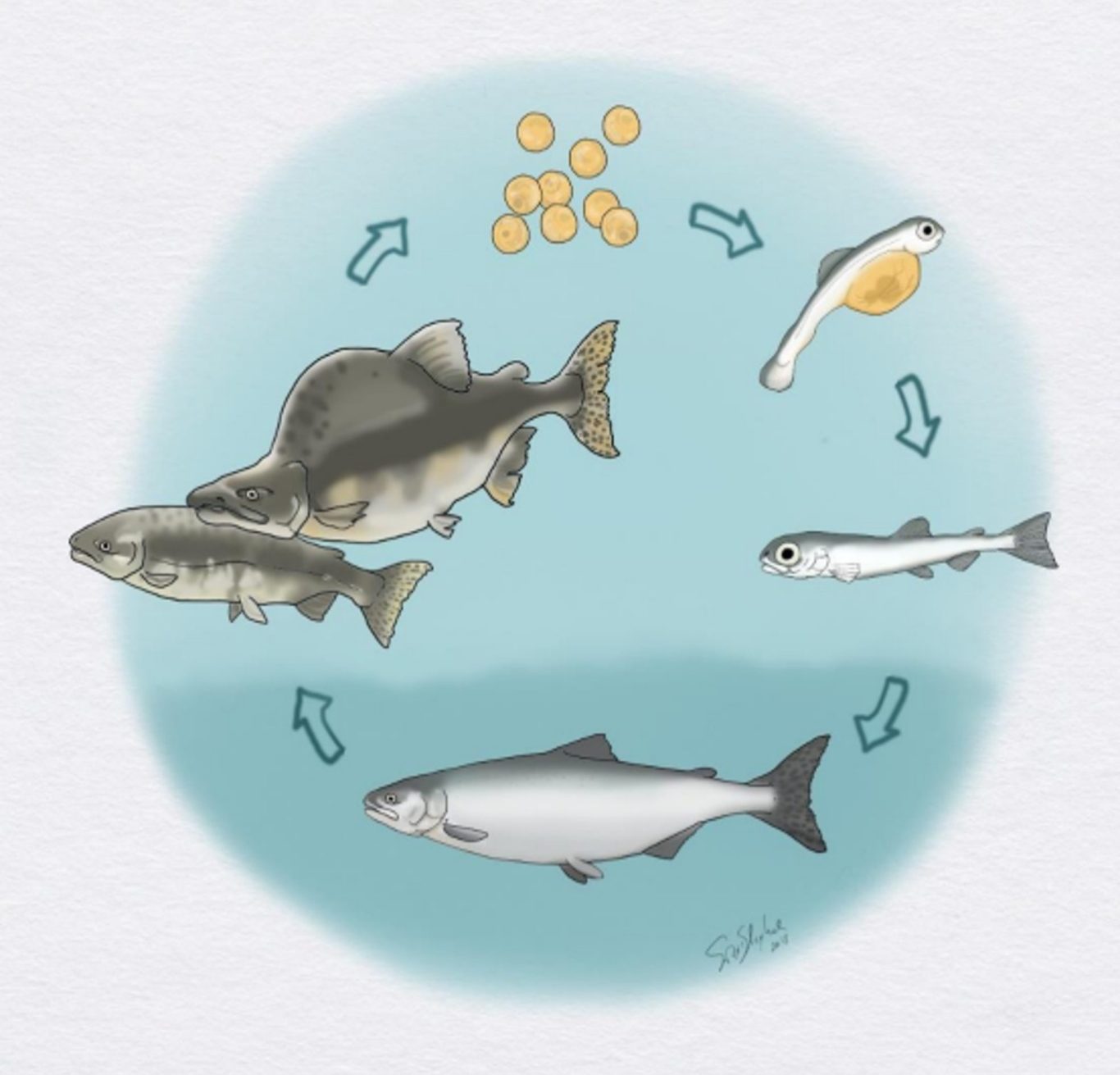www.stateofthecoast.scot
Pink Salmon (Oncorhynchus gorbuscha)
Key Findings
Historically, pink salmon (Fig. 1) have been a rarity in Scotland with only 17 recorded between 1960-2016. However, in recent years there has been a significant rise in records around Scotland with 139 in 2017, 18 in 2019, 169 in 2021, and 47 in 2023 (Fig. 2) (Marine Scotland, 2023; Fisheries Management Scotland, 2024). Information regarding their presence in Scotland is quite limited, although trends indicate that the species may become significantly prevalent in Scotland within just a few years.
Native Range and Distribution:
Pink salmon are native to the Pacific Ocean, with spawning grounds in North America and Asia (NNSS, 2019; Skóra et a, 2023). The spread of pink salmon from the Pacific to the Atlantic was the result of the intentional introduction of the species into Western Russian rivers. This allowed the species access to the North Sea, first reaching Norway, and then making the journey to the UK (Armstrong et al, 2018).
As it stands, pink salmon has the potential to become invasive in the UK alongside numerous other countries; Belgium, Estonia, Finland, France, Germany, Iceland, Ireland, Latvia, Lithuania, Norway, Poland, Sweden, and The Netherlands (NNSS, 2019). In the UK, the species is most prevalent in Scotland and within Scotland the species is most prevalent in Caithnesshire, South Aberdeenshire, Angus, and the Scottish Borders regions (Fig. 3) (NNSS, 2019). With the first pink salmon observed in the UK in 1960, the first record of spawning was recorded over 50 years later in 2017, in the River Dee, Aberdeenshire (Armstrong et al, 2018).
Habitat and Characteristics:
Pink salmon are ‘anadromous’, meaning they live in both fresh water and salt water (NOAA Fisheries, 2023). Their life cycle (Fig. 4) begins in freshwater, where females lay eggs in nests called ‘redds’ which are then fertilised by males (Forth Rivers Trust, n.d.). Once hatched, they develop into ‘smolts’, the stage at which they begin to migrate toward the ocean (Armstrong et al, 2018). In the oceans they spend 18 months developing into their adult stage, taking on oval spots along their backs. Finally, they return into freshwater rivers to lay eggs, becoming darker in colour and developing a large back hump. They will die soon after spawning (NOAA Fisheries, 2023). Notably, the species operate on a two-year reproductive cycle, with both odd and even year broods that do not breed together. The broods present in Scotland are typically those of the odd years (e.g. 2017, 2021) (Armstrong et al, 2018).
Future Trends:
It is still unclear whether the species could (or has already) become truly established in Scotland. This would require the survival of fish spawned in Scottish rivers to breeding age, wherein they would return to Scotland to lay their own brood. Recent research by Skóra et al (2023) found that pink salmon can complete the first freshwater component of their lives in Scotland, with smolt stage fish identified in the Thurso and Oykel rivers.
However, survival to reproductive age may be the hurdle. Armstrong et al (2018) explain that Scottish rivers are warmer than may be optimal for the species. They suggest this warmth may lead to the species spawning in the autumn season, and thus moving into the oceans during winter when food is limited. As such, survival to reproductive age (when the fish would return to Scottish rivers) is unlikely, although further research would be required for confirmation.

Figure 1: (NNSS, 2019) Female (top) and male (bottom) Pink Salmon

Figure 2: Map of pink salmon reports 2017, 2019 & 2021- data supplied by Fisheries Management Scotland (Marine Scotland, 2023)

Figure 3: Scottish fishery districts which have recorded pink salmon (Armstrong et al, 2018)

Figure 4: Illustration of the Pink Salmon life cycle (Skoglund, S. in Gargan et al, 2019)
Notes
Linked Information Sheets
Key sources of Information
Armstrong, Bean & Wells (2018) The Scottish invasion of pink salmon in 2017
Fisheries Management Scotland (2024) Pink Salmon in Scotland (Data 2017 - 2024)
Forth Rivers Trust (n.d.) Redd Counting
Marine Scotland (2023) Reporting pink salmon in Scottish waters
NASCO (2023) Pink Salmon Update 2023 – United Kingdom
NNSS (2019) Pink salmon (Oncorhynchus gorbuscha)
NOAA Fisheries (2022) Salmon Life Cycle and Seasonal Fishery Planning
Reviewed on/by
Status
Live - Next update due 09/01/2026
To report errors, highlight new data, or discuss alternative interpretations, please complete the form below and we will aim to respond to you within 28 days
Contact us
Telephone: 07971149117
E-mail: ian.hay@stateofthecoast.scot
We need your consent to load the translations
We use a third-party service to translate the website content that may collect data about your activity. Please review the details in the privacy policy and accept the service to view the translations.

